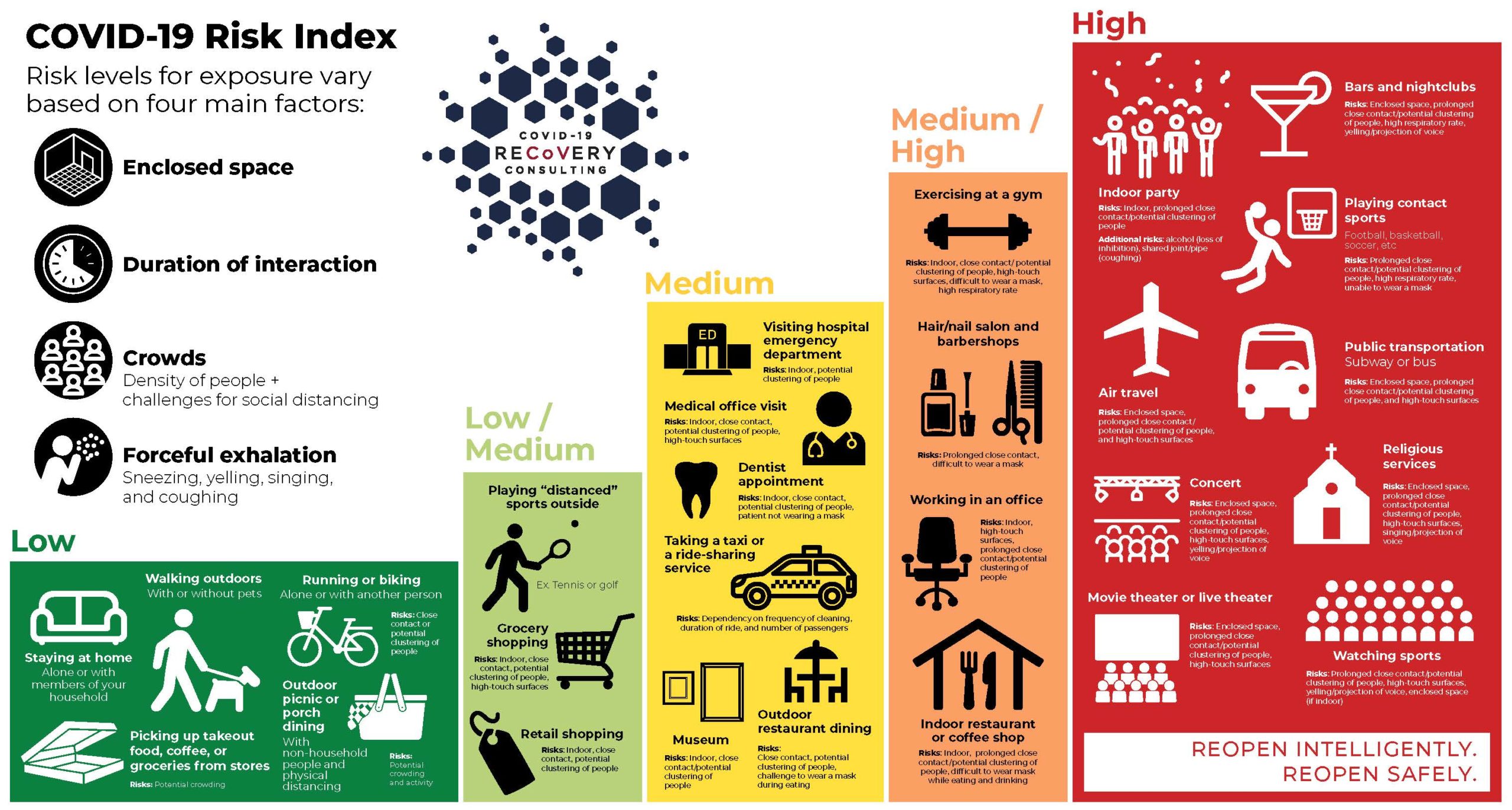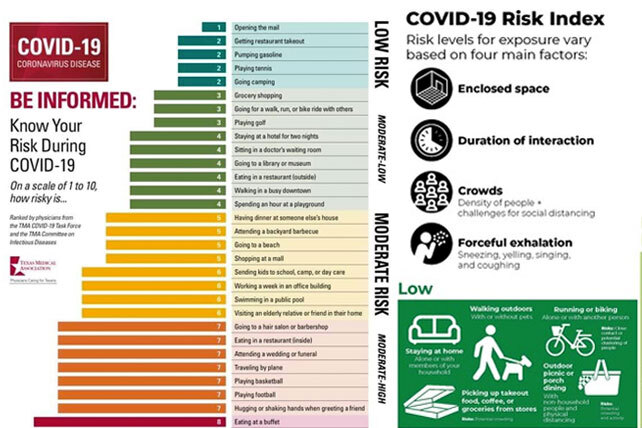For anyone wondering not just what activities put people at risk for getting COVID-19, but why they do, medical professionals recently released two different charts that address both questions. The charts, one of which was developed by the Texas Medical Association, each concur that attending religious services carries a high level of risk for contracting the virus.
“I do think that the public has needed and frankly deserves a little bit more directed guidance,” said Dr. Mark Casanova, president of the Dallas County Medical Society. Casanova was referring to the benefits of a new chart from the Texas Medical Association (TMA). The chart was developed by 14 doctors with different areas of expertise from the TMA COVID-19 Task Force and the TMA Committee on Infectious Diseases.
Texas Medical Association Releases COVID-19 Activity Risk Guide
Texas Medical Association’s chart evaluates 37 different activities and ranks them for risk on a scale of 1 to 10. Each activity falls into one of five color-coded categories: low risk, moderate-low, moderate risk, moderate-high, and high risk. It is important to note that the physicians who created the list (which is not exhaustive) did so with the understanding that people participating in those activities would be wearing masks and trying to practice social distancing.
The chart’s low risk activities include camping, opening mail, and getting takeout from a restaurant. Moderate-low risk tasks include grocery shopping, eating outside at a restaurant, and spending an hour at a playground. Among the moderate risk activities are going to dinner at someone else’s house, swimming in a public pool, and visiting an elderly friend or relative. Going to a salon, contact sports, and hugging a friend are considered moderate-high risk. Among the activities that are at the highest risk for catching COVID-19 are exercising at a gym, going to a bar, attending sporting events at a stadium, and participating in worship services with over 500 attendees.
Second Chart Sheds Light on the First
Throughout the pandemic, some people have questioned why congregations have been banned from meeting in person while grocery stores have been allowed to remain open. In addition to categorizing activities by risk, a second newly-released chart identifies four risk factors that shed light on why each activity is dangerous, and therefore why certain public activities are riskier than others. This chart was developed by three people: infectious disease epidemiologist Professor Saskia Popescu, PhD, MPH, who is with the University of Arizona; James P. Phillips, MD, the Chief of Disaster Medicine at GWU Emergency Medicine; and Ezekiel J. Emanuel, a bioethicist, oncologist, and a Special Advisor to the Director General of the World Health Organization.
According to this chart, “Risk levels for exposure vary based on four main factors.” Those factors are:
- Enclosed space
- Duration of interaction
- Crowds
- Forceful exhalation

Like the first chart, the second separates risk into five risk categories, from low to high. Unlike the first chart, the second chart uses the word “medium” instead of “moderate” and does not include a 1 to 10 scale for each activity.
While the two charts do not agree precisely, they present similar views on the level of risk for each behavior. For example, the second chart labels walking or running as low risk, while the first lists walking or running as a moderate-low risk, a three on its 1 to 10 scale. In this example, the second chart is less conservative than the first.
On the other hand, the second chart puts playing contact sports in the high category, while the first chart lists them as a 7 in the moderate-high category, so in this case the second is the more conservative of the two charts. While the charts contain other minor differences of this nature, there are no major discrepancies between them. For example, both put grocery shopping in the moderate-low or low/medium category.
Both charts agree that attending bars, concerts, and sporting events are in the high category, as is attending religious services. Unlike the first chart, the second does not qualify religious services with a number of attendees, but categorizes them all as high risk. The reasons why, according to the chart, are that people are in an enclosed space for an extended period of time and there is a high chance that attendees will cluster, sing, and touch the same surfaces.
While these two charts do not extensively answer every question someone might have about why some activities are riskier than others, they are helpful resources that speak to what has become a topic of heated debate.


